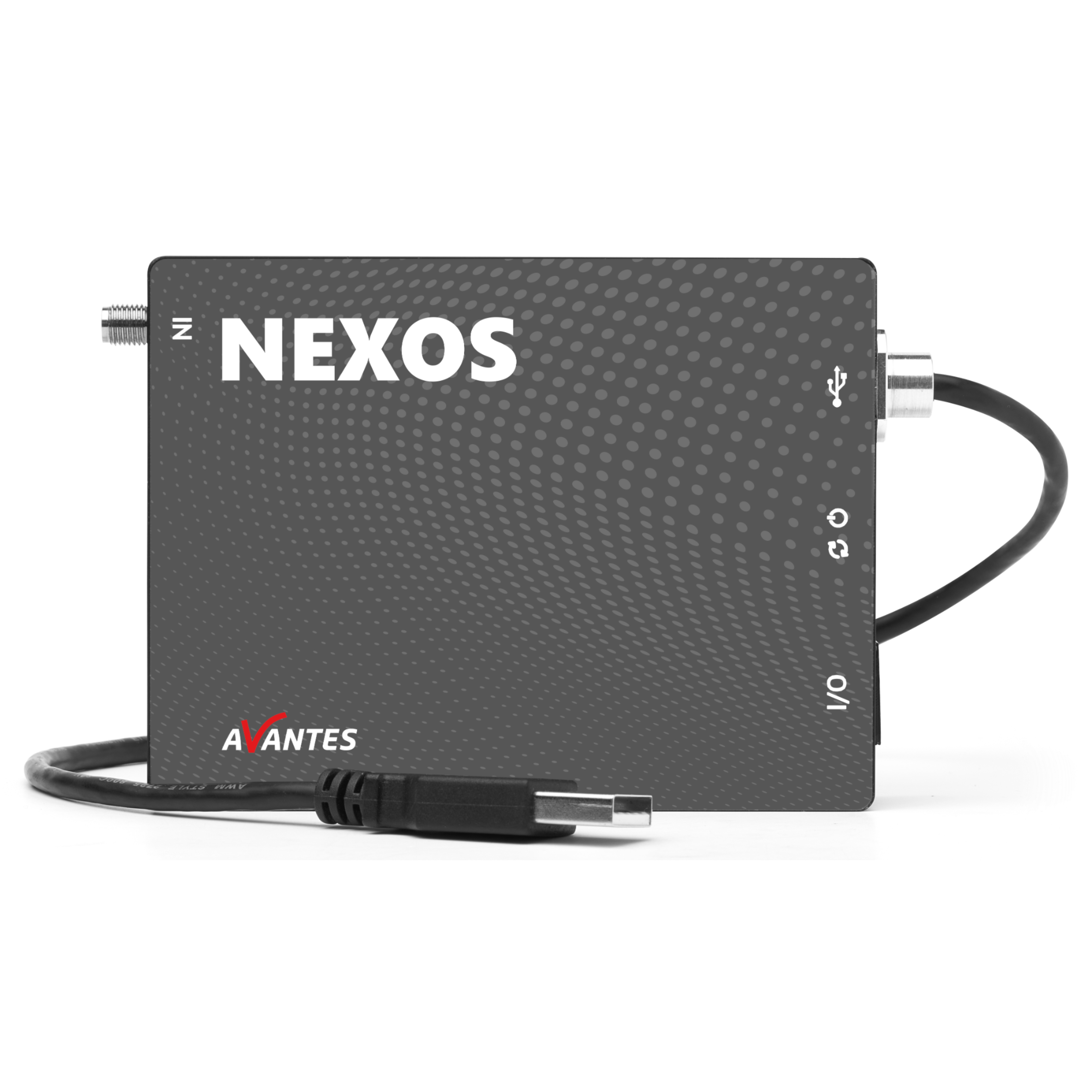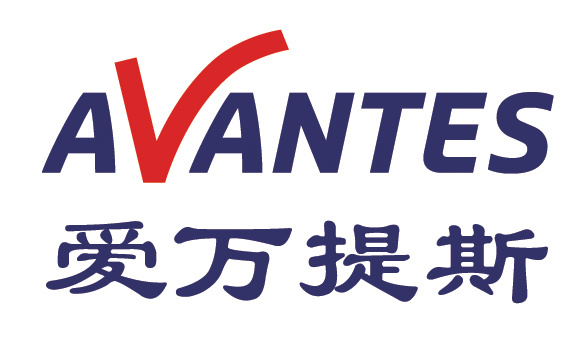方案详情
文
陨石是降落在地球表面的外星岩石,而不是在到达地球之前就燃烧的流星,它在地球的历史演变中扮演着重要的角色。关于陨石的假说有很多,有些人认为月球是由一颗大陨石与地球相撞的残余物形成。还有人认为,覆盖地球的水是由陨石带来的。其中更广为人知的说法是陨石撞击造成了白垩纪-古近纪灭绝事件。
方案详情

用LIBS(激光诱导击穿光谱)技术区分地球岩石和陨石实验背景陨石是什么?陨石是降落在地球表面的外星岩石,而不是在到达地球之前就燃烧的流星,它在地球的历史演变中扮演着重要的角色。关于陨石的假说有很多,有些人认为月球是由一颗大陨石与地球相撞的残余物形成。还有人认为,覆盖地球的水是由陨石带来的。其中更广为人知的说法是陨石撞击造成了白垩纪-古近纪灭绝事件。如何辨别陨石?陨石中存在着许多奥秘,其标本自然也受到了历史学家,地质学家和地外事物爱好者的追捧。然而,判断一块岩石是否为真正的陨石却比较困难。一般情况下,鉴定岩石类别的基本指标有:密度,磁性和成分。但是,例如陆地岩石中主要由铁组成的无定形岩石,它们在外观和成分上也与陨石大致相似。所以,我们需要使用更具针对性的方法来鉴定岩石的类别,其中较为有效的方法就是利用激光诱导击穿光谱(LIBS)技术。LIBS-激光诱导击穿光谱技术激光诱导击穿光谱(LIBS)是一种原子发射光谱,它使用脉冲激光器作为激发源。激光脉冲聚焦到被测物体的表面,使被测材料表面的激光功率密度升高至一定程度。在如此之高的激光功率密度作用下,被测材料表面会有几微克的物质喷射出来,同时材料表面还会产生寿命很短但亮度很高的等离子体,其瞬间温度可达10,000 摄氏度 。冷却过程中,处于激发态的原子和离子从高能态回至低能态,此时不同元素会发射出其特定波长的光,这个光被光谱仪监测到后形成光谱,在光谱图中可以直接观测到代表各元素波长的峰。因此,LIBS成为了一种用于鉴定不同类型金属和矿物成分的光谱技术。实验方法本次实验的目的是:利用LIBS鉴别四个岩石样品中的陨石和陆地岩石。实验共有四个样品,其中两个样品为陨石样品,分别是H5普通球粒陨石和镍铁陨石。另外两个样品为氧化铁(FeO2)和二氧化钛(TiO2)。实验中我们采用了AvaSoft中的原始数据扣除暗背景模式,即Sd模式。使用此模式可以减少噪声,并更好地隔离和识别等离子体峰。我们将积分时间设置为10ms,平均次数设置为1。图1:本次实验所用的岩石和陨石样品(从左至右依次为:H5普通球粒陨石、镍铁陨石、氧化铁、二氧化钛)实验配置本次实验(图2)使用了全新的AvaSpec-PCT4096CL迷你型光谱仪,它设计紧凑,更易集成到台式设备和手持设备中,更适配OEM用户。这款光谱仪配置4096像素CMOS探测器,其分辨率可达0.09 nm,杂散光水平低至0.1%。图2 :LIBS测量实验装置光谱仪被固定在激光器上方实验使用的其他附件如下:Lumibird公司的DPSS双脉冲Nd:YAG激光器、定制短光纤、使激光器和光谱仪同步测量的Quantel控制箱,其型号为FX002725。实验结果下图显示的是每个样品在Sd模式下的LIBS光谱。图3:H5普通球粒陨石样品的LIBS光谱图4: 镍铁陨石样品的LIBS光谱图5:氧化铁样品的LIBS光谱图6:二氧化钛样品的LIBS光谱图7: 镍铁陨石(橙色)和氧化铁(红色)样品的的LIBS光谱对比图图8:H5普通球粒陨石(绿色)、镍铁陨石(橙色)、氧化铁(红色)和二氧化钛(蓝色)样品的LIBS光谱对比图结果分析首先来看其中的三个样品:H5普通球粒陨石、镍铁陨石和氧化铁,它们在230-265 nm波长范围附近都显示出一簇峰(图3-5),表示它们含有铁元素。H5普通球粒陨石样品在280 nm附近和288 nm附近存在其余样品没有的峰,这两个峰分别表示它含有镁元素和硅元素,测量结果与H5普通球粒陨石的成分相对应。对比镍铁陨石和氧化铁样品,两者区别不大(图7)。但在镍铁陨石样品光谱图中可以观测到一个略高的峰,大约在221 nm附近,表示它含有镍元素。二氧化钛样品(图6)在230-265 nm波长范围内的峰较少,表示其铁元素含量较少。其主峰在300-340 nm波长范围内,表示它含有钛元素。实验结论通过使用LIBS技术观察光谱图中每个样品的特定波长峰,能够便捷直观地确定样品的元素组成。本次实验使用的新款迷你型光谱仪PACTO适配于各类应用,它尺寸小巧,支持多种通信协议,易于集成到产品和系统中。AVANTES MEMBEROFTHENYNOMIC GROUP IN-HOUSE EXPERIMENT COMPARISON OF TERRESTRIALAN D EXTRATERRESTRIAL ROCKS USING LIBS CONDUCTED BY KURT AMEKU BACKGROUND INFORMATION Meteorites are extraterrestrial rock that fall to the surface of Earth, as opposed to meteors that burn up before making contact. Meteorites have played a crucial role throughout the history of our planet. Some hypothesize that the Moon formed from the remnants of a large meteorite colliding with Earth. Another hypothesis suggests that the water that covers Earth was brought here by meteorites. Perhaps most notably, it is commonly believed that the Cretaceous-Paleogene extinction event, which caused the extinction of all non-avian dinosaurs, was caused by one or several meteorite impacts. With meteorites being linked to these events, among many others, it is no surprise that they are sought-after specimens of historians, geologists, and anyone interested in what is beyond our planet. Unfortunately, determining whether a rock is a true meteorite or has been misidentifeid (colloquially called a “meteor-wrong”) can be a diffciult process. Simple indicators may be; density, magnetism, and composition: meteor-wrongs often contain quartz, which is not found in meteorites. But in cases where terrestrial rocks are generally similar to meteorites in appearance and composition, such as amorphous rocks primarily composed of iron, more targeted methods must be used to determine the origin of a rock. One such method is laser-induced breakdown spectroscopy, or LIBS. LIBS is a type of atomic emission spectroscopy which uses a highly energetic laser pulse as the excitation source. The laser is focused to form a plasma plume, which atomizes and excites samples. Plasma formation begins when the focused laser achieves a certain threshold for optical breakdown. From the plasma plume, the spectrometer measures peaks at specifci wavelengths that can be correlated to particular elements, as all elements emit light of characteristic frequencies when excited to suffciiently high temperatures. As a result of this phenomenon, LIBS is an excellent spectroscopic technique for identifying the specifci composition of different types of metals and minerals. This experiment aims to use LIBS to distinctly characterize a collection of rocks as either meteorites or terrestrial rocks. Two iron-rich meteorite samples (H5 ordinary chondrite and iron ataxite) were measured along with iron oxide (FeO2) to compare similar extraterrestrial and terrestrial rock samples. Titanium dioxide (TiO2) was also measured to provide a vastly different spectrum to compare the other samples against. DESCRIPTION OF SPECTROSCOPY SETUP The setup for this experiment (Figure 2) is based on the Compact Spectrometer . In cases where size matters, the AvaSpec CompactLine family offers compact spectrometers, some of the smallest units on the market today. Their compact size enables easier integration of the spectrometers into machines and handheld devices. The ease of integration makes the CompactLine especially suited for OEM users wanting to integrate a spectrometer into their devices. The Compact Spectrometer is equipped with a 4096-pixel CMOS detector array. The CMOS array features an incredible resolution of up to 0.09 nm, and the low stray light design allows stray light levels as low as 0.1%. The fast response time boasts data transfer speeds as fast as 1.12 ms/scan and integration times ranging from 9 µs to 30 s. The Compact Spectrometer used in this experiment is optimized for the UV range at a 200-450 nm wavelength range. The light source used for this experiment was the plasma generated from a DPSS (double pulse, single scan) Nd:YAG laser, courtesy of Lumibird. Lumibird provides a wide range of lasers, with this one in particular built for rugged applications and unpredictable environments where temperature and vibration would destroy most commercial lasers. This laser operates at eye-safe wavelengths, specifcially at 1574 nm, with an energy of 4.5 mJ per pulse. Designed for battery operation in hand-held and mobile applications, this compact yet robust laser features maintenance-free operation for years of hard use. Other accessories used for this experiment included a FIGURE 2 Experimental setup for LIBS measurement. The spectrometer is attached to a custom fixture and mounted directly above the laser. The unit measures the LIBS plasma plume via a mounted short fiber optic cable. custom short 100-micron core fiber optic cable to directly measure the plasma plume, a Quantel control box (FX002725) to power the laser and sync the laser pulses and spectrometer measurements, a custom interface cable to connect the AvaSpec-PCT4096CL to the control box, and a custom 3D-printed mount to hold the fiber optic cable at the precise angle to line up with the focal point of the laser. EXPLORE MORE APPLICATIONS AND INDUSTRIES SERVED BY AVANTES Agriculture & Food Food Sorting Precision Agriculture Environmental (Bio)Medical Blood Analysis Cancer Detection System Integration Integrate into your product or system DESCRIPTION OF METHODOLOGY Two of the four total samples are terrestrial rocks (iron oxide and titanium dioxide), and two meteorite samples (H5 ordinary chondrite and iron ataxite). Each sample was placed in the firing range of the laser, and the laser was activated using serial commands. The spectrometer was synced to the laser pulses on the hardware side using the Quantel control box and on the software side through defined settings in AvaSoft , our custom software package. For data analysis, we used the Scope-Minus-Dark mode in AvaSoft. This is a common mode for LIBS measurements, as it subtracts the dark spectrum (what the spectrometer measures with no light source) from the raw counts (i.e., scope mode) for each wavelength. This helps minimize noise in the spectrum and better isolate and identify the plasma plume peaks. We used an integration time of 10 milliseconds, which in most cases, can be adjusted to increase or decrease the amount of light being measured at one time and affects the overall magnitude of the reported spectrum. For LIBS applications, since the plasma plume is generated and decays at such short intervals, increasing the integration time will increase the portion of time where no light is measured and decrease the measurement amplitude. We set averaging to 1, meaning each measurement corresponds to one plasma plume instance. TEST DATA AND RESULTS Displayed below are the LIBS spectra of the samples in the scope-minus-dark mode for each sample. Yra v el e n i gin[h m FIGURE 3: LIBS spectra of H5 ordinary chondrite sample FIGURE 4: LIBS spectra of iron ataxite sample 12000 11500 FIGURE 5: LIBS spectra of iron oxide sample FIGURE 6: LIBS spectra of titanium dioxide sample Wav e langth [nm FIGURE 7: LIBS spectra of iron ataxite (orange) and iron oxide (red) samples, shown together for comparison W av elengt n [m mj FIGURE 8: LIBS spectra of H5 ordinary chondrite (green), iron ataxite (orange), iron oxide (red), and titanium dioxide (blue) samples, shown together for comparison ANALYSIS AND CONCLUSION Three of the four samples measured (H5 ordinary chondrite, iron ataxite, and iron oxide) showed a cluster of peaks in the range of approximately 230-265 nm (Figures 3-5). This range indicates iron, which is an obvious conclusion from the names of the iron ataxite and iron oxide samples. The H5 designation in the chondrite sample categorizes it to have a high iron abundance, so these results align with the expected spectra. The H5 ordinary chondrite sample has lower values in this 230-265 nm range but does have a significant peak around 280 nm, where the other two iron samples do not (Figure 5). While the lower magnitude in the 230-265 nm range cannot be directly correlated to a lower iron percentage without more complex analysis, the significant peak around 280 nm would indicate the presence of magnesium. This makes sense since the most abundant minerals in H-type ordinary chondrites are bronzite and olivine, both of which are partially made up of magnesium. Silicon has a prominent peak around 288 nm, which is also seen in the H5 ordinary chondrite spectrum. Not surprisingly, silicon is also present in the minerals bronzite and olivine. Besides iron, the other elemental component of these minerals is oxygen, though its presence is not seen since its peak is in the 770-780 nm range. The titanium dioxide sample (Figure 6) shows significantly fewer peaks in the 230-265 nm range, indicating little iron content. Instead, the main peak range is visible in the 300-340 nm range, which correlates well with titanium. Titanium also has significant peaks at higher wavelengths, which may also be indicated in the spectrum. Comparing the iron ataxite and iron oxide samples, little difference can be seen between the two (Figure 7). While this seems to thwart our attempt to present a clear distinction between terrestrial and extraterrestrial rocks, this is consistent with the ataxite classification, which is composed mainly of meteoric iron in addition to high nickel content. A slightly higher peak around 221 nm is seen in the iron ataxite sample, which may correspond to a nickel peak, which is often seen between 200-250 nm. A graph of all the spectra together is included for comparison of all samples (Figure 8). CONCLUSION In conclusion, the present experiment highlights the use of the LIBS measurement technique in determining the elemental compositions of samples. While no distinct feature could be used here to determine if a rock sample was terrestrial or a meteor, the elemental compositions could be partially determined easily by the signifciant peaks measured from each sample. Further analysis could fully characterize the composition of each sample, which in turn could uncover specifci qualities to determine the origin of rock samples. The Compact Spectrometer is an ideal solution for OEM applications or any other cases where a compact form factor is critical. The Lumibird laser pairs perfectly with the Compact Spectrometer for LIBS measurements, but there are many more suitable lasers available. Both the custom interface cable and the 3D-printed cable mount highlight the capabilities of our engineering team to provide custom assemblies and solutions for customer needs. Please get in touch with Avantes for more information on the configuration that is best suited for your data collection. CONTAC T WE'RE HAPPY TO HELP Curious how spectroscopy can help you reveal answers by measuring all kinds of material in-line, at your production facility, in a lab, or even in the field? Visit our website or contact one of our technical experts. We are happy to help you. Avantes Headquarters Phone: +31 (0) 313 670 170 Email: info@avantes.com Website: www.avantes.com Avantes Inc. Phone: +1 (303) 410 866 8 Avantes China Phone: +86 (0) 108 457 404 5 Email: info@avantes.com.cn Website: www.avantes.cn Follow us on socia l media: i n f
确定







还剩5页未读,是否继续阅读?
北京爱万提斯科技有限公司为您提供《用LIBS(激光诱导击穿光谱)技术 区分地球岩石和陨石》,该方案主要用于镍中陨石检测,参考标准--,《用LIBS(激光诱导击穿光谱)技术 区分地球岩石和陨石》用到的仪器有Avantes-NEXOS™系列迷你型光纤光谱仪
相关方案
更多
该厂商其他方案
更多










